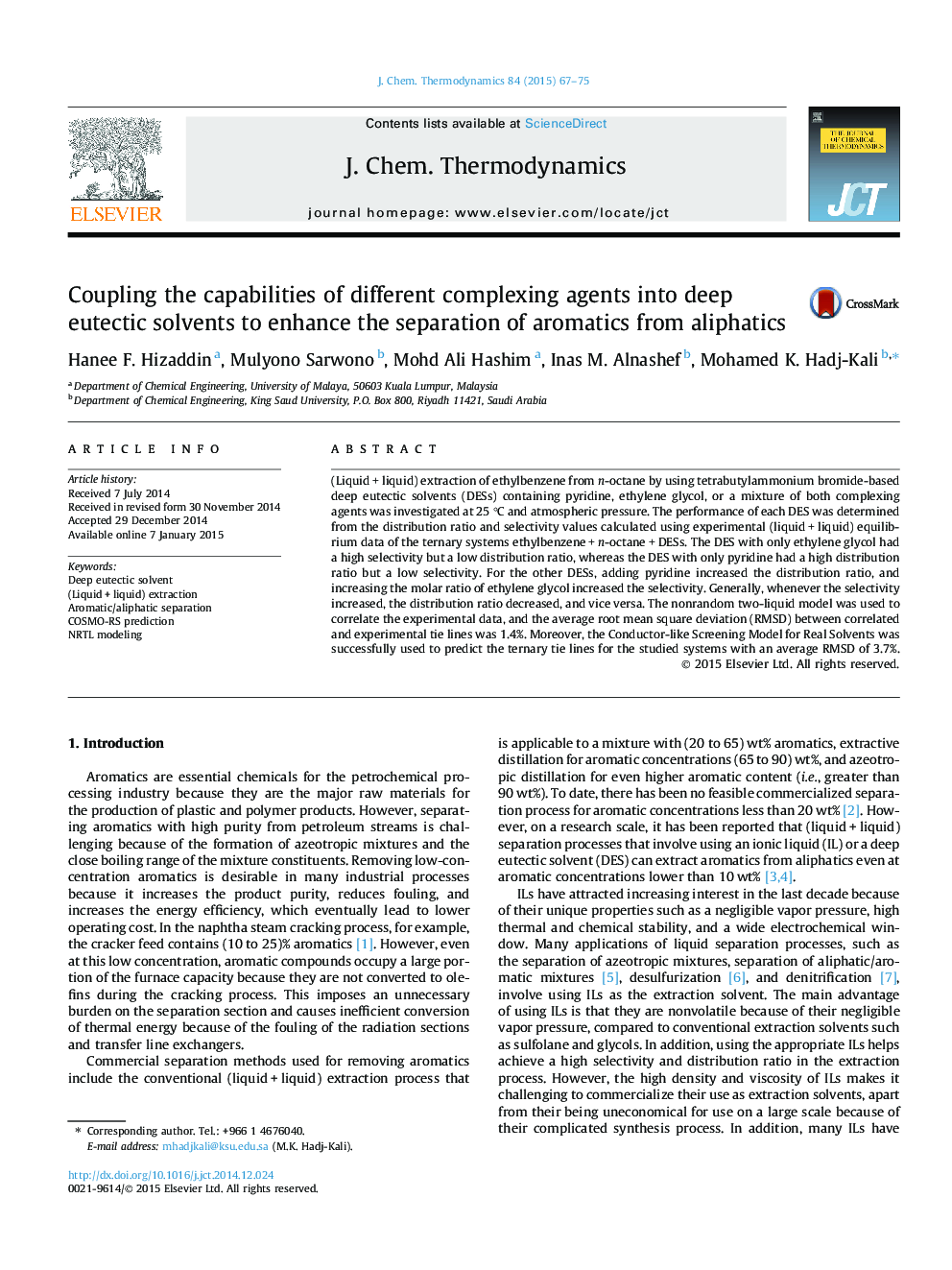| Article ID | Journal | Published Year | Pages | File Type |
|---|---|---|---|---|
| 215190 | The Journal of Chemical Thermodynamics | 2015 | 9 Pages |
•DESs made of three constituents are used for the separation of hydrocarbon mixture.•Ethylene glycol and pyridine are used as complexing agents for the DESs.•Addition of ethylene glycol results in increased selectivity of aromatics.•Increasing the molar ratio of pyridine improve the distribution ratio.•Ternary LLE results are well correlated with NRTL model and COSMO-RS prediction.
(Liquid + liquid) extraction of ethylbenzene from n-octane by using tetrabutylammonium bromide-based deep eutectic solvents (DESs) containing pyridine, ethylene glycol, or a mixture of both complexing agents was investigated at 25 °C and atmospheric pressure. The performance of each DES was determined from the distribution ratio and selectivity values calculated using experimental (liquid + liquid) equilibrium data of the ternary systems ethylbenzene + n-octane + DESs. The DES with only ethylene glycol had a high selectivity but a low distribution ratio, whereas the DES with only pyridine had a high distribution ratio but a low selectivity. For the other DESs, adding pyridine increased the distribution ratio, and increasing the molar ratio of ethylene glycol increased the selectivity. Generally, whenever the selectivity increased, the distribution ratio decreased, and vice versa. The nonrandom two-liquid model was used to correlate the experimental data, and the average root mean square deviation (RMSD) between correlated and experimental tie lines was 1.4%. Moreover, the Conductor-like Screening Model for Real Solvents was successfully used to predict the ternary tie lines for the studied systems with an average RMSD of 3.7%.
